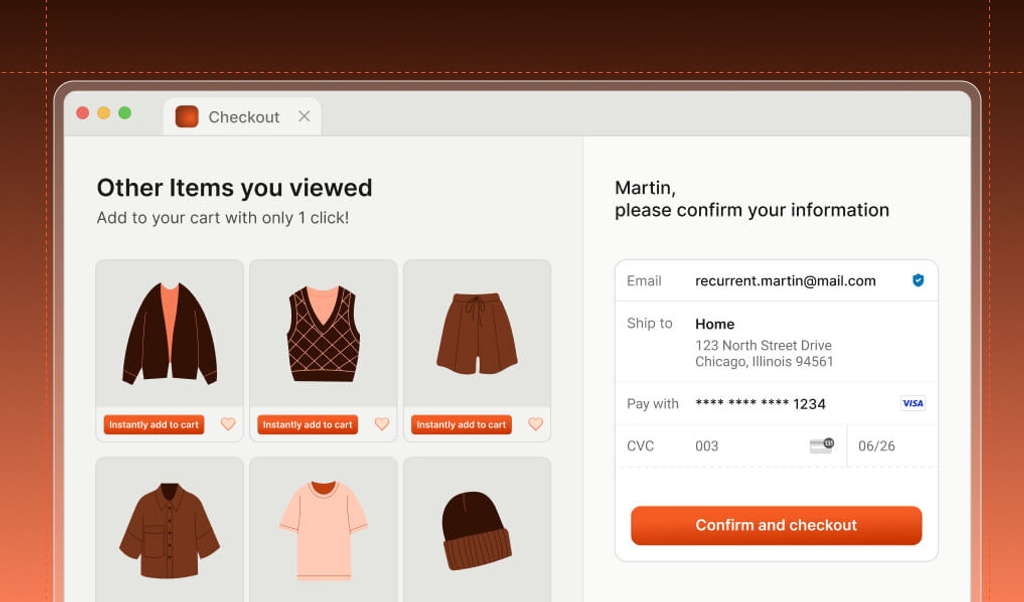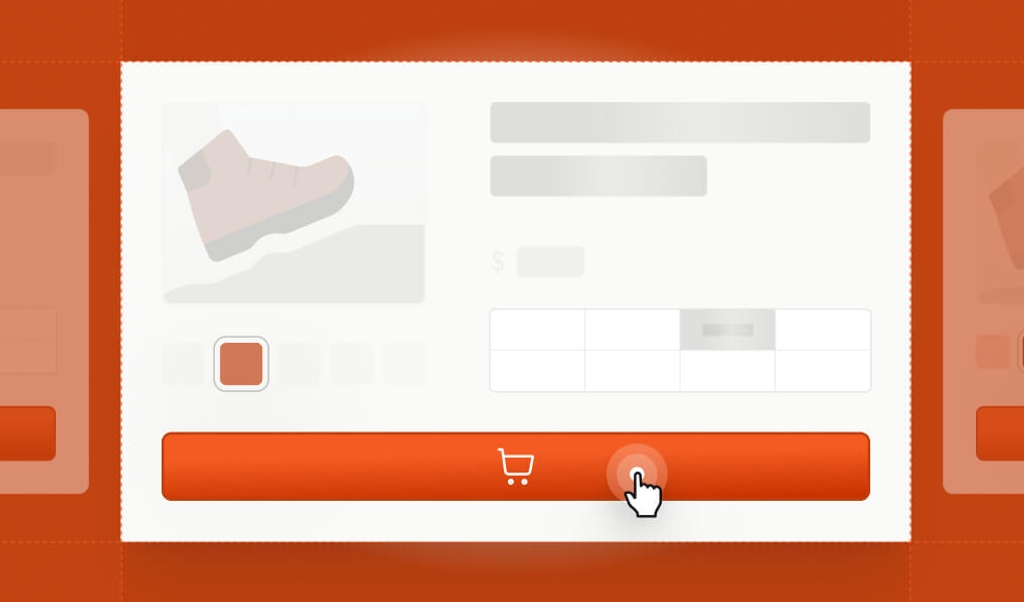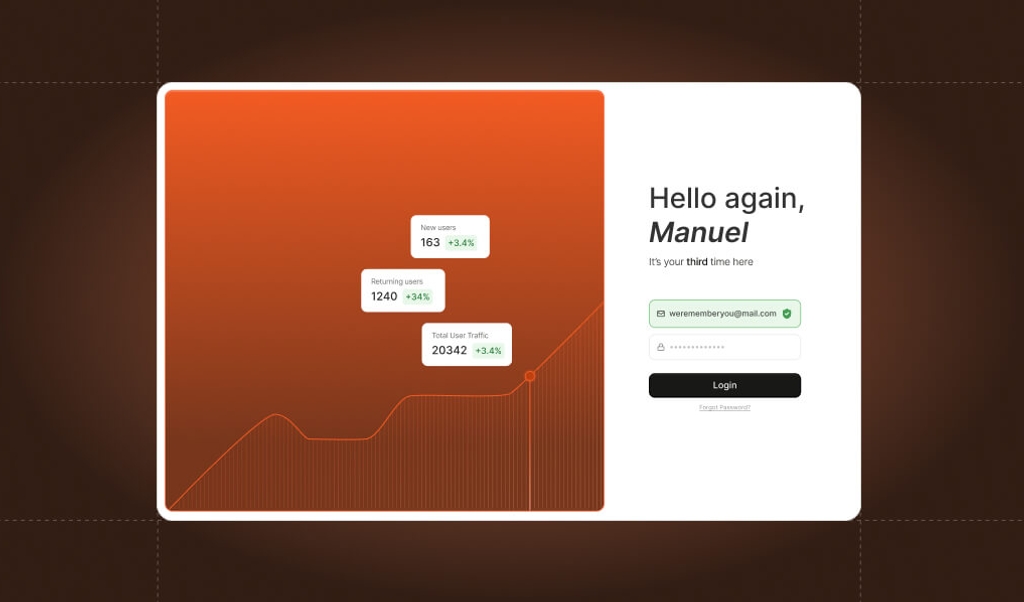
Summarize this article with
Providing customers with a positive experience is a high-stakes endeavor: a 2018 PricewaterhouseCoopers survey found that 59% of consumers said they’d walk away after a few bad experiences with a brand. By contrast, Qualtrics research found that customers who rate an experience with five out of five stars are more than twice as likely to buy from you again.
Many factors go into keeping customers happy as they move through their purchasing journey, but providing a pain-free user experience is high on the list. You can improve conversion rates and increase customer lifetime value (CLTV) with a better return user experience (RUX) for people who have previously visited your website or app. Prioritizing good RUX is an approach to customer satisfaction that strives to make your website or app as welcoming and enjoyable as possible when a user returns.
How good RUX improves conversions
So, who does a good RUX serve? It could be someone who took a look around but wasn’t ready to buy yet, or a frequent visitor coming back to check out new seasonal offerings. The foundation of the approach is recognizing return users, both anonymous and not, so that you can:
- Remove friction from logins, checkouts, and other transactions
- Save them time by helping them pick up where they left off
- Tailor the experience to interests and preferences from previous visits
Without this approach, every visit feels like the first, forcing users to start from scratch while feeling unwelcome. Some elements of a good RUX strategy might include:
- Smoother transaction flows: When customers encounter obstacles while trying to check out, they become less likely to complete their purchase. For example, research from Baymard Institute shows that 70% of digital shoppers abandon their shopping carts before purchase. Make sure customers don’t have to re-add items to their shopping cart if they navigate away from your site before checkout, and cut down on the number of steps needed to purchase if it’s a trusted user you recognize. For example, you could pre-fill forms with preferences used during prior visits.
- Faster logins for trusted return shoppers: Instead of requiring multi-factor authentication (MFA) such as one-time passwords (OTP) at every login, familiar visitors can log in to their accounts with a single click. MFA can add five to 30 seconds to every login flow, which may drive users to look for a competitor with a more seamless shopping experience. In addition, allowing users to stay logged in longer can reduce the number of opportunities to be frustrated by new logins or forgotten passwords.
- Personalization for familiar customers: Research from McKinsey found that 71% of consumers expect personalization, and companies that personalize well generate 40% more revenue. Customizing a return user’s experience can include showing products related to ones they browsed on a previous visit, promotions related to frequently viewed content, or UI preferences based on prior behavior. For customers who haven’t visited in a while, you can include incentives or features they’ve missed while away. You can also provide an engaging experience based on previous behaviors regardless of whether a user decides to log in. For example, if you’re a clothing retailer, you might still want to show a visitor pieces related to their previously browsed items, even if they haven’t made an account.
Customers who feel like you value their time and interests when they return to your website are more apt to buy from you. An Accenture survey on personalization found that 91% of consumers “are more likely to shop with brands that recognize, remember, and provide them with relevant offers and recommendations.”
The impact of RUX on customer lifetime value
Beyond the direct impact on facilitating conversions, a good RUX strategy also has the potential to increase not just individual purchases but also the relationship a customer has to your business over time. A strong RUX strategy can:
- Increase customer lifetime value, as retaining existing customers typically costs six to seven times less than acquiring new ones.
- Make it easier for customers to purchase more frequently, especially when they know the checkout flow won’t annoy them.
- Increase the likelihood that your customers recommend your business or products to someone they know.
- Extend the time users spend on your site by offering enjoyable and personalized experiences.
- Improve security by reducing the risk of account takeovers and fraud.
Respecting your customers’ time not only makes them more likely to buy from you on individual occasions, they are also more likely to be good and loyal customers over the long haul. A Forrester survey of 90,000 US adults found that consumers named feeling valued, appreciated, and respected as the top three emotions they associated with brand loyalty.
How device intelligence can improve RUX
A crucial piece of RUX is ensuring high accuracy when identifying returning visitors. If you can’t confidently identify when someone’s visited before, you will be limited in how widely you can deploy a RUX strategy.
Device intelligence is the best way to identify unique devices, and it is more reliable than using cookies or IP addresses to recognize anonymous visitors.
Device intelligence collates browser, device, and network signals to distinguish one visitor from another. It allows you to recognize a user’s browser or device as soon as it arrives at your site or app, before logging in. It also provides an added layer of verification that returning users are who they say they are during checkout or other sensitive transactions.
We are the leading device intelligence experts
At Fingerprint, we focus on being the best at high-accuracy device identification. We identified more than four billion unique devices in 2024, and we use more than a hundred signals for industry-leading accuracy rates. We assign each device or browser that visits your site a unique ID number, specific to your site, that can remain stable for months or even years. It persists even when customers visit using incognito mode, clear cookies, or use a VPN. And on top of identifying good users, our device intelligence is also excellent for identifying fraudsters and malicious bots.
Supported with device intelligence, a thorough RUX program holds great promise for converting more sales, retaining more customers, and improving brand perception. One Canadian fintech startup that uses Fingerprint’s device intelligence was able to reduce MFA requests by 70%, improve customer satisfaction, and decrease operational costs while still providing enhanced security against account takeovers and payment fraud.
If you’re interested in learning more, you can try it for free, get in touch with us, or watch our webinar on RUX.



